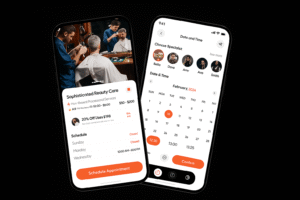Learn how to secure your WordPress website in 2025 with proven tips, tools, and best practices to prevent hacking, malware, and data loss.
Introduction: Why WordPress Website Security Matters
WordPress powers over 43% of all websites on the internet, making it a top target for hackers. Whether you’re a blogger, freelancer, or business owner, knowing how to secure your WordPress website is crucial to protect your data, users, and reputation.
In this in-depth guide, we’ll explore the essential steps to secure your WordPress website in 2025. These techniques cover everything from login protection and malware prevention to backup strategies and plugin safety.
H2: Use Strong Login Credentials
H3: Avoid Common Usernames
Never use “admin” or your website name as your username. These are easy to guess and often the first attempts made by bots.
H3: Use Strong Passwords
A strong password includes:
Uppercase and lowercase letters
Numbers and symbols
At least 12 characters
Use a tool like LastPass or 1Password to manage secure logins.
H3: Limit Login Attempts
Use plugins like Limit Login Attempts Reloaded or Wordfence to block brute force attacks and limit login retries.
H2: Keep WordPress, Themes, and Plugins Updated
Outdated themes and plugins are the most common way hackers gain access to sites.
Enable auto-updates for minor releases
Regularly check your dashboard for updates
Remove unused or outdated plugins/themes
Regular updates are one of the easiest ways to secure your WordPress website.
H2: Install a Trusted WordPress Security Plugin
Security plugins offer firewalls, malware scanning, and real-time monitoring.
Top Picks:
Wordfence Security: Real-time threat defense
Sucuri Security: Website firewall & malware cleaner
iThemes Security: Brute force protection & 2FA
These plugins are essential tools to secure your WordPress website from known and unknown threats.
H2: Use Two-Factor Authentication (2FA)
Add an extra layer of security by enabling 2FA for all users.
Recommended Plugins:
Google Authenticator
WP 2FA
Duo Two-Factor Authentication
2FA helps you secure your WordPress website even if your login credentials are compromised.
H2: Install SSL and Use HTTPS
HTTPS encrypts the data transmitted between your website and visitors, protecting sensitive information.
Use free SSL from Let’s Encrypt
Install using your hosting provider or a plugin like Really Simple SSL
Redirect HTTP to HTTPS
Google also favors HTTPS websites for SEO, making it a dual win.
H2: Backup Your Website Regularly
Even with the best security, things can go wrong. Regular backups ensure you can restore your website quickly.
Top Backup Plugins:
UpdraftPlus
BlogVault
Jetpack Backup
Set automatic daily or weekly backups, stored off-site (e.g., Google Drive, Dropbox).
H2: Secure Your wp-config.php and .htaccess Files
These core files contain critical information about your site.
Tips:
Move wp-config.php one directory above root
Use
.htaccessto restrict file accessDisable file editing from the dashboard
// Disable file editing
define('DISALLOW_FILE_EDIT', true);
These actions add an advanced layer to secure your WordPress website.
H2: Disable XML-RPC and REST API (If Not Used)
XML-RPC can be exploited in brute force and DDoS attacks. Disable it if you’re not using it.
Disable via plugin:
Disable XML-RPC
REST API Toolbox
Always audit what your site actually uses to reduce vulnerabilities.
H2: Change Default WordPress Login URL
The default /wp-login.php is well known to hackers.
Use plugins like:
WPS Hide Login
LoginPress
This minor tweak can greatly help to secure your WordPress website against automated attacks.
H2: Monitor User Activity
For multi-author sites or teams, it’s vital to track what users are doing.
Use:
WP Activity Log
Simple History
Tracking changes allows you to spot unusual behavior before it becomes a major issue.
H2: Scan for Malware Regularly
Most security plugins include malware scanning. You can also use online tools like:
Sucuri SiteCheck
VirusTotal URL Scanner
Set regular scans to maintain a clean, secure environment.
Frequently Asked Questions (FAQs)
Q1: How often should I back up my WordPress website?
Daily or weekly, depending on how often you update content.
Q2: Is WordPress secure?
Yes, WordPress is secure if you follow best practices like updates, strong passwords, and plugin moderation.
Q3: Can I secure my WordPress website without coding?
Absolutely. Most modern security measures can be implemented using plugins—no coding required.
Q4: What should I do if my site gets hacked?
Run a malware scan
Change all passwords
Contact your host or use a professional cleaning service
Conclusion: Protect Your Website with These Proven Security Steps
Learning how to secure your WordPress website is essential in 2025. With increasing cyber threats, implementing these strategies gives you peace of mind while maintaining user trust and protecting your brand.
From login protection and 2FA to backups and malware scans, each step you take today safeguards your website’s future. Don’t wait for a breach—secure your WordPress website now and keep it running safely for years to come.














